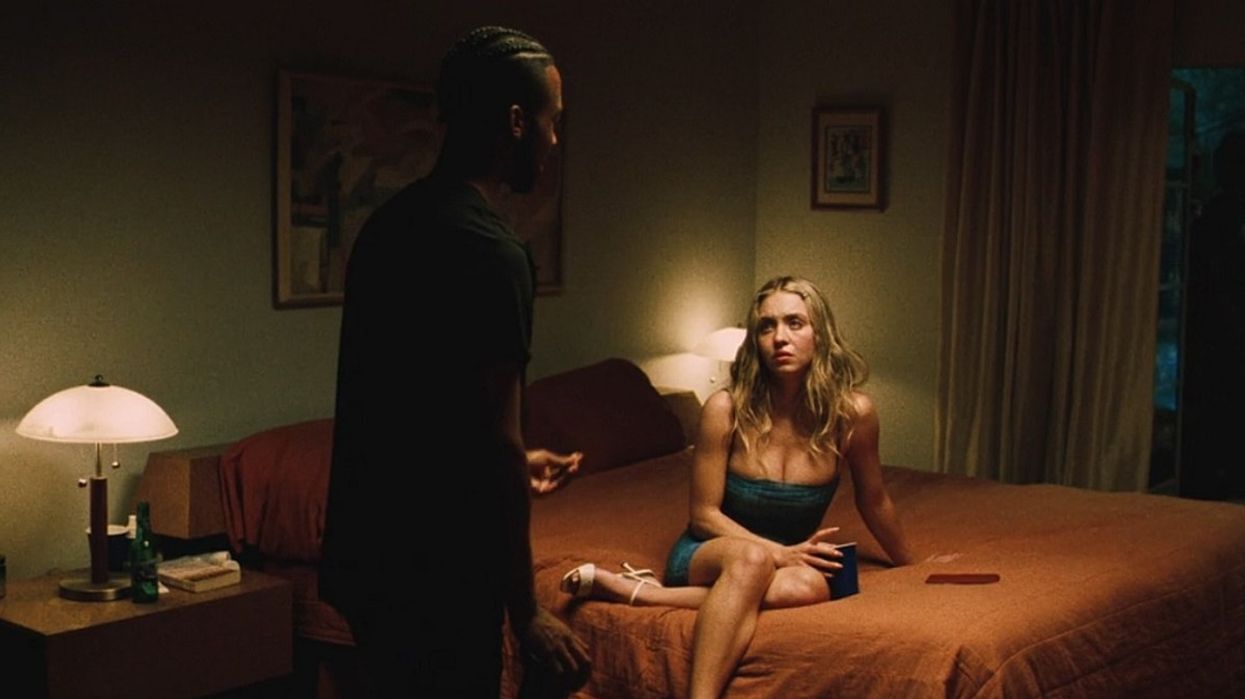Is There a Difference Between Sex Scenes on TV and Adult Films?
Can the industry evolve past our cultural "moral panic" surrounding sex?

Most recent TV hits like White Lotus, Bridgerton, and Normal Peoplehave many, many sex scenes in them. It seems sex scenes are being revolutionized in TV and film, with intimacy coordinators in high demand to help navigate intimate scenes while ensuring the safety and comfort of actors.
The beautiful lighting and camera angles scream, “This is cinema,” at us as we watch from our couches, but it feels like these finely choreographed, beautiful sex scenes get close to softcore adult films. With Xhighlighting earlier this year that a “dirty film” can be art, the TV and film industry seem to avoid any association with the porn industry despite reflecting similar characteristics.
So why is one considered “art” while the other is snubbed completely? Let’s break it down.

Sex and Love in an Acceptable Art Form
In the wake of Bridgerton and its steamy love scenes that piqued viewers’ curiosity, adult film producer Noelle Perdue is challenging Hollywood’s double standard when it comes to classifying content.
In an opinion piece for Slate, she recalls Bridgerton’s success and attention are attributed to two things—its accessible streaming service and said streaming service issuing takedown notices to porn sites that uploaded explicit scenes from season one.
Perdue writes in her piece that after the takedown, “a source told a British tabloid that the show’s sex scenes ‘appearing alongside some of the most obscene material the web has to offer has sparked horror and anger’ among the show’s cast.”
Sex scenes from Hulu’s Normal People also ended up in a 22-minute compilation on Pornhub upon release. Executive producer Ed Guiney told Variety, “We’re hugely disappointed that excerpts from the series of Normal People have been used in this way,” saying that it was a “violation of copyright” and “deeply disrespectful to the actors involved and the wider creative team.”
“While I fully concede intellectual property theft and piracy are legitimate concerns for Netflix—to say nothing of the cast’s consent about where their work appears—the side of [the] moral panic surrounding the show’s approximation to ‘obscenity’ was confusing,” Perdue writes. “Watching [Bridgerton] as a consumer, I didn’t see much of a difference between their well-lit choreography and what I was producing for work.”
It’s hard to say that Bridgerton isn’t closely related to “obscenity” when the show’s climax relies on whether or not someone climaxes. What allows Bridgerton to succeed in the mainstream is that it has Netflix telling its audience that it is acceptable to watch this show and its explicit sex scenes.
Sure, it’s not a family show, but it’s a fantasy that people want to watch.
Is there a difference between TV sex scenes and adult films?
Shows like Bridgerton, Normal People, and most of HBO’s lineup would be categorized as “softcore porn,” which includes frontal nudity, but no penetration or visible “money shot.”
But Hollywood would never use that term to describe their work.
Instead, explicit sex scenes would be described as “never pornographic but quite explicit,” as one Vulture article puts it. What does make explicit sex pornographic then?
“As sex-forward shows only seem to get more graphic—and more popular—the need to hold on to this distinction is looking a little dishonest, and maybe a little desperate,” Perdue writes. The attempt to separate pornographic or “obscene” material from art is an almost impossible task. Art can be pornographic, yet America’s morality around sex and pleasure becomes weak at the knees as it tries to justify it in film.
There is a culture of fear in the film industry that goes beyond porn.
“Sure, maybe their genitals aren’t touching, but in porn, we go through similar negotiation processes, similar contracts, similar choreography and blocking,” Perdue writes.
That’s not even discussing unsimulated sex scenes, which also occasionally appear in mainstream media.
“Arguing over whose sex scene qualifies as art—and whose does not—ultimately leads to sexuality gatekept by deep-pocketed institutions and sex workers facing further stigmatization,” Perdue writes. “There is nothing ‘deeply disrespectful’ about being associated with a lot of the great porn produced in the past and today; sexual expression has artistic value both as a plot device and for the sake of itself.”
The rise of explicit content in mainstream media is redrawing the lines of old boundaries.

The consequences of “moral panic”
Perdue notes that adult film performer Chloe Cherry, who starred in season 2 of Euphoria, was able to leap into mainstream TV—a rarity when it comes to Hollywood studio acting.
Why are some actors punished for working in the adult film industry while other studio actors are applauded for their softcore sex scenes on TV? Is one deemed more prestigious than the other?
“I think the actor’s sense of fear isn’t even one they’ve come up with themselves,” Caitlin Stasey, an Australian actress and writer/director for porn films, says. “You’re convinced as an actor that if you do porn, if you’re associated with porn, you’ll never work again.”

In contrast, many actors get acclaim when appearing nude in Martin Scorsese or Lars von Trier films, where it is regarded as carefully crafted art. But if a woman shows her body online, then the public regards her as “reckless, compulsive, nonessential.”
Sex is a natural thing. It’s a part of life, yet there is something that views sex as this foreign thing that needs to be presented to the public in a beautifully wrapped box.
The amount of labor that goes into making beautiful sex scenes in film and the adult film industry is the same, so why are people still being ostracized out of moral fear for having softcore sex on camera?
If Hollywood looks at sex as artistic and cool, then why are their noses still turned away from adult films and their stars? Let us know what you think in the comments.
Source: Slate












